Line of Fire #13, Blood on the Alma, 1854.
pre order here:
http://www.locknloadgame.com/Section_Cat_Content_Detail.asp?SCAT=78&SID=33&ID=140
Shipping shortly. Counters are in, content is done, rumour has it this might be a good if not great game?
Lord Raglan looked at his tea in distaste. Bloody Turkish tea, he thought. This would never do. The phantom pain from his savagely amputated right arm ached in the cold morning air. He passed the lukewarm, bitter sweet mess to his Orderly. “Do find some Indian tea leaves from the Quartermaster please, theres a good chap.” He said. “We are in the middle East are we not?” His eyebrow raised ever so slightly.
Life had never been the same since Waterloo he thought to himself. It was not just the wound, now he was allied with the French! This fine, regal, noble man next to him, The Marshal of France Saint Arnaud had once been his enemy. Now his pristine blue uniform, medals and sharp goatee were aligned against a common foe.
The peasant empire of Russia and their General Menshikov, would surely bow to their combined might thought Lord Raglan, as he absently rubbed his aching right stump. He smiled warily at Arnaud, and took his leave from watching the ill, dysentery ridden rabble of his own forces disembarking. Logistics were everything, and he had no control of any of it for the coming campaign and winter offensive. He envied the days when the Iron Duke fought the Home Office and won.

By 1854, the Art of War was taking on a distinctly muddy feel. The Age of Napoleon had passed. Yet the time of Classical Strategy whilst in its nadir was not yet done. Sadly so. Formations and armies fought much as they had since the days before Alexander the Great. Great columns of men, packed tightly, marched across fields and into range of each others weapons.
War had taken a grim turn. There was a mismatch between Tactics and Technology. Between Science and Strategy. Rail played a role in the Crimean War as did Telegraph technology. It is often dubbed the first modern war. Modern weapons and technology, certainly not modern tactics.
Artillery long used as a siege weapon now was so devastating on the field that it had truly become the King of the battlefield. The Infantry feared it, Cavalry rarely could best it, and the range and calibres improved every year.
At the Siege of Sevastopol, here is a table of the Main Guns present:
Enough firepower to blow small towns apart. The Infantryman’s guns had better ranges and caliber as well! In fact most aspects of war had become more efficient. Almost industrialization of the killing machine. Man was the grist in the mill of wars rotation.
The French Mine ball carbine was one such weapon that saw action in the Crimean War, and would prove devastating in the historical battle.
The Crimean War was on torrid affair that sat astride history as a War between major changes in tactics, major changes in Strategy and major technological advances.
This War also saw the first tactical use of railways and other modern inventions such as the electric telegraph, with the first “live” war reporting to The Times by William Howard Russell. Some credit Russell with prompting the resignation of the sitting British government through his reporting of the lacklustre shape of the British forces deployed to the Crimea. Additionally, the telegraph reduced the independence of British overseas possessions from their commanders in London due to such rapid communications. Newspaper readership informed public opinion in the United Kingdom and France as never before. It was the first European war to be photographed.
Pity the solider on the field. Armies were hide bound to tradition and leadership was lacking on most fronts. The Army of Napoleons era had devolved into a perverse Political class and an instrument of Political Power at a level unseen since Alexander’s day when Policy and General were one. It highlights the notorious failures of the military and logistical immaturity of the British army.
However, it highlighted the work of women who served as army nurses. War correspondents for newspapers reported the scandalous treatment of wounded soldiers in the desperate winter that followed and prompted the work of Florence Nightingale, Mary Seacole, Frances Margaret Taylor and others and led to the introduction of modern nursing methods.
This makes any game or simulation or representation of the Crimean war very difficult. Especially the battle on the Alma. What was the bloody war over in any case?
The War
The Crimean War (1854-56) developed because of an argument between the French and Russian religious fraternities over who should have access and right to holy areas in the Middle East, namely Nazareth and Jerusalem. It seems that religion has a lot to answer for when it comes to war, because inevitably discussions turned to arguments, which turned to violence, which resulted in death on both sides. The whole debate had been escalated to a level beyond all reason. The situation was compounded when the Russians, under the directive of Tsar Nicholas I, moved troops into the area, supposedly in order to shield the aforementioned sacred grounds.
The more sceptical of the neutral observers around at the time, may have thought that this military movement had slightly more sinister overtones”¦ and they would have been right! Not long after positioning troops in the Middle East, then a part of the Turkish Ottoman Empire, the Russians upped the stakes by massacring a small fleet of Turkish boats, an act that the Turks must respond to.
Back in England, there was more than a murmuring of discontentment from the British government over the acts of the Russians. After all, they had initiated military manoeuvres, that, if proved successful would give them control of an area vital to the Mediterranean trade route so necessary to the British. The French, eager to be allied to the British, began discussions with them, and consequently both countries sent expeditionary forces to the Balkans to confront the Russians.
The war proper started in March of 1854, and six months later the British and French had driven the Russians back from the land they had occupied in the Ottoman Empire. Buoyed by their victory though, they pursued the Russians, who had decided to defend the key naval base of Sevastopol. After arriving on the shores of the Crimean peninsula, north of the base, the British and French troops made their way to attack it, and on the way the Battle of Alma took place.
The Alma was the second of three rivers they needed to cross to reach the base. The Russians had decided to defend the river because on their side they were able to use to their advantage steep hills and rocky cliffs. In the early stages of the battle the French were able to storm the cliffs near to the coast and drive the Russians back. To their left though, the British soon became a disorganised mob. Although briefly taking a Russian position, they were then forced back. Their retreat was better than their attack though – they drew many Russians into an area where they could pick them off at will. Because of the heavy number of casualties received by the Russians, they were forced to withdraw – the Battle of Alma was over.
Source: http://www.essortment.com/crimean-war
The Game
This is a new system for Pre WWI combat, and I wonder if it can be applied to other Napoleonic Era Battlefields. It simulates at the Division level, scale of the battle field is not discussed.
Rules are concise, clear and should withstand misinterpretation…even from me. Useful comments and design notes are appended in a thoughtful manner in a narrow 3rd column. In a nod to the specific battle the Sequence of play provides us with a unique approach. In fact it uses a strict turn sequence AND chit pull for the British to impart command issues!
Movement is simple, artillery combat shows its deadly effects well and the flavor for Cavalry with their unique impact on the field is dealt with in a elegant manner.
The individual units have different strengths, and some have unique capabilities. Steps for losses are simply represented by a chit underneath the unit. This provides a nice visual cue and a 3 dimensional aspect to strength assessment. Units also may gain benefits or attract penalties depending on the result of a given combat, that result stays with them for the duration of the battle.
Each special rule for Russian units such as Cossacks, Jaegars and the 17th Musket are one paragraph or less and establish periodicity perfectly. The same can be said for rules for Marines, Leger Guards and Highlanders.
After Action Report
Coming next.
Related articles
- Blood on the Alma. (meshtime.com)
- Book Review of The Crimean War: British Grand Strategy against Russia, 1853-56 (militaryhistoryblog.wordpress.com)
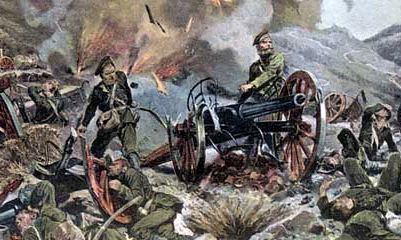
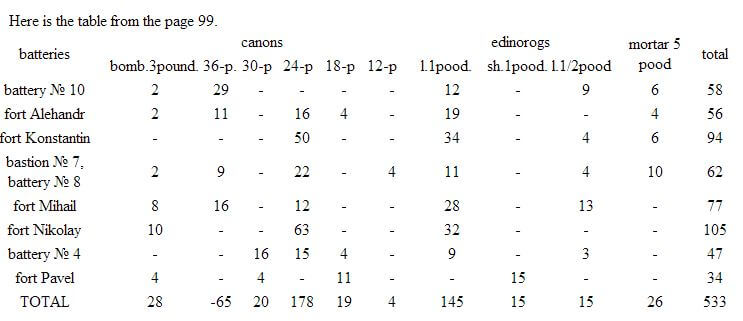
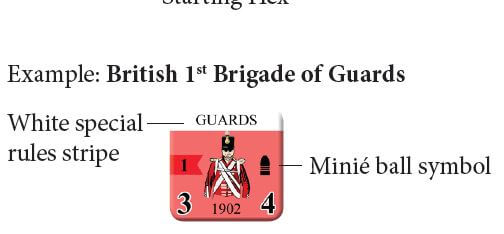
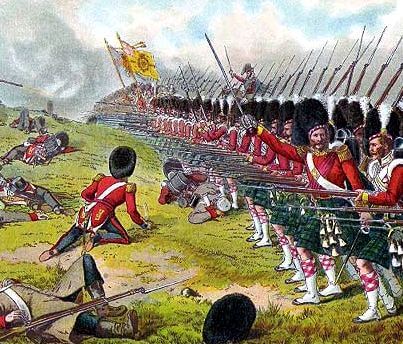
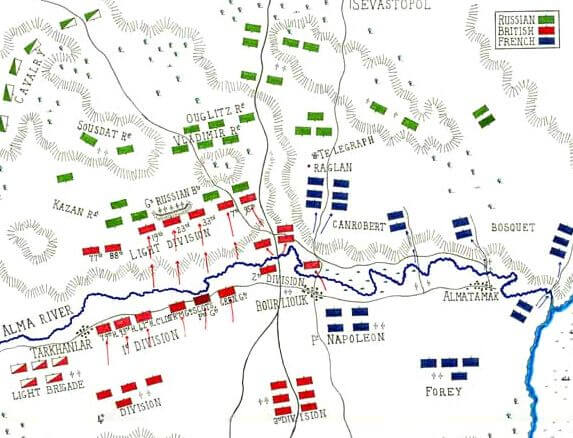
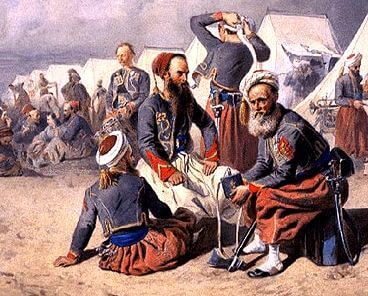

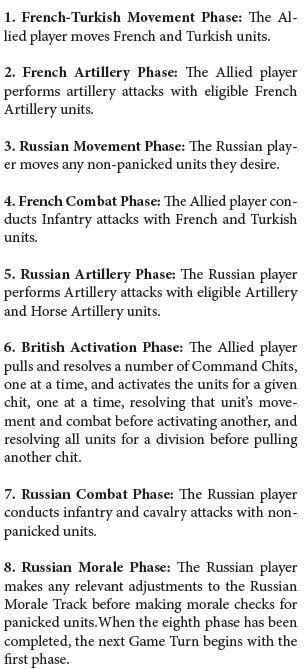
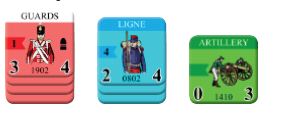

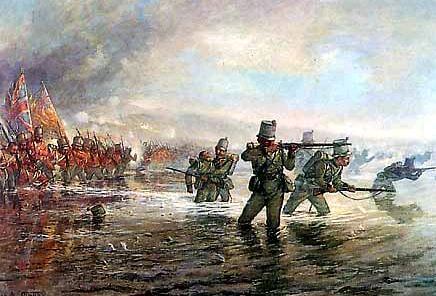
Seems odd to use chits for the Brits and nobody else.
When do the British Artillery fire? Or don’t they have any?
it seems to work. They have poor command so you dont get to control the ‘order ‘ in which they activate.
The British Artillery Units are activated during the British Activation Phase.
Thanks Tom. I will be posting an AAR in the next few days. Looks fab mate!
So the British arty can integrate more tightly with the infantry than the other 2 armies, assuming the division gets its chit pulled – you could fire 1 arty, move and attack 1 unit, then fire another arty
If the arty is its own ‘unit’, then it is more similar to the other two armies.
I’m interested in how the AAR comes out. I haven’t read much about the Crimean War since high school.
That’s correct in theory, but in practice each Division only has one arty unit. The other thing is that if a British Unit suffers a retreat or elimination, they’ve committed a “blunder” and the British Phase ends *immediately*, even if there were other units/divisions that could have been activated otherwise.